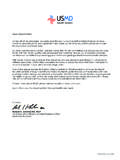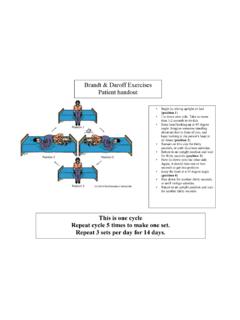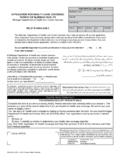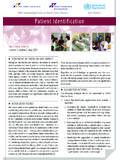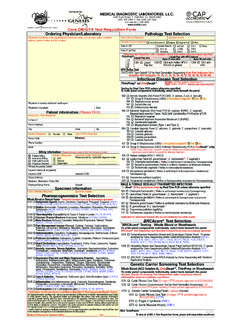Transcription of Patient Positioning During Surgery - ovucla.org
1 Patient Positioning During Surgery Objectives Exam importance of proper Positioning in various surgical procedures Define and demonstrate appropriate Patient Positioning During general and regional anesthesia Identify common injuries related to inappropriate Positioning Define expected and potential physiologic changes related to Patient position Why is Positioning important? Patient cannot make clinician aware of compromising positions Enables IV lines and catheters to remain patent Enables monitors to function properly Facilitates the surgeon's technical approach Patient safety (aka Don't Let The Patient Fall Off The Table). Various Positions Supine Prone Jackknife Prone Prone/Kneeling Lateral Prone/Knee-chest Lithotomy Sitting Lawnchair What ever bizarre Jackknife position the surgeon Lateral Jackknife wants the Patient in Supine Supine Patient on back Arms on arm boards Check orientation of arm (arms < 90 degrees). Make sure arm is supinated (palm up). Place additional padding under elbow if able Arms tucked Check fingers Check IV lines and SaO2 probe Prone Prone Face down HEAD PLACEMENT.
2 Head straight forward ET tube placement and patentcy Check bilateral eyes/ears for pressure points Head turned Check dependent eye/ear ETT placement Be aware of potential vascular occlusion Prone continued Arm placement Tucked similar concerns to supine Abducted Check neck rotation and and arm extension to avoid possible brachial plexus injury Make sure elbows are padded Chest Rolls Often up to surgeon as to what type of rolls are used Prone continued Illiac support Make sure some sort of padding is placed under illiac crests Lateral Lateral Patient on side (lateral decubitus position). left lateral decubitus position means right side up Most important to maintain body alignment Keep neck in neutral position Always place axillary roll Place padding between knees Try and place padding below lateral aspect of dependent leg (prevent peroneal nerve damage). Lateral continued Position arms to parallel to one another Place padding between arms or place non- dependent are on padded surface Check pulses Lithotomy Lithotomy Various types of stirrups Candy cane Allen stirrups Knee cradles Various degrees of lithotomy Low High Move legs at same time when Positioning Patient in and out of lithotomy Stirrups Sitting Position Sitting Position Position used in neurosurgery procedure to facilitate access to posterior fossa Potential complications from sitting position Venous air emboli Need to take measures to detect and extract VAE.
3 Hypotension Brainstem manipulations resulting in hemodynamic changes Risk of airway obstruction Jack-Knife Common Injuries Secondary to Positioning Ulnar Nerve Injury Most common nerve injury in anesthetized Patient Often injured when compressed between the posterior aspect of medial epicondyle of elbow and armboard or bed More likely with elbow flexed or forearm pronated Symptoms include loss of sensation of lateral portion of hand and inability to abduct or oppose the fifth finger (claw hand). Common Injuries continued Brachial plexus nerve injury Second most common type of nerve injury Injury occurs often when plexus is stretched or compressed between the clavical and first rib Seen in prone and supine procedures where head rotated and laterally flexed to the same side and/or arm is extended posteriorly past the plane of the torso Can occur due to compression from shoulder braces placed too close to the neck Common Injuries continued Manifestations depend on which nerves are injured in the plexus: Median Ape hand deformity, inability to oppose thumb Axillary inability to abduct the arm Ulnar Claw hand deformity Musculocutaneous inability to flex forearm Radial wrist drop Common Injuries continued Radial nerve injury Can be injured if compressed against spiral groove of humerus and other object ( ether screen or excessive cycling of NIBP).
4 Symptoms include wrist drop, weakness of abduction of thumb, and loss of sensation in web space between thumb and index finger Common Injuries continued Common peroneal nerve injury Injured when lateral aspect of knee is compressed against stirrup Sciatic nerve injury Can become stretched by exaggerate flexion of hips (foot drop). Femoral nerve injury May become kinked under inguinal ligament from extreme flexion and abduction of thighs Common Injuries continued Saphenous nerve injury May be injured when the medial tibial condyle is compress by leg supports. Obturator nerve injury May be injured During difficult forceps delivery or by excessive flexion of the thigh to the groin Anterior tibial nerve injury Foot drop will occur if the feet are plantar flexed for extended periods of time (sitting or prone). Injuries Occurring From Prolonged Positioning Eye compression in prone position The retinal artery can be compressed by external pressure resulting in retinal ischemia and blindness Constantly check eyes During such Positioning and make sure they are lubricated and taped to decrease incidence of corneal abrasions Skin breakdown due to prolonged Positioning Make sure bony prominences are well padded Avoid direct focused pressure on scalp (can lead to alopecia) ?
5 Head straps? Physiological Changes Related to Change In Body Position Most changes are related to gravitational effects on cardiovascular and respiratory systems Changes in position redistribute blood within the venous, arterial, and pulmonary vasculature Pulmonary mechanics also change with varying body positions Cardiovascular Changes with Positioning Changing from erect to supine increases venous return and stroke volume Parasympathetic stimulation regulate heart rate and contractility to adjust to increased preload Obesity, pregnancy, and abdominal tumors can reduce venous return (preload) when in the supine procedure Pulmonary Changes with Positioning In supine position, functional residual capacity and total lung capacity are reduced This is exaggerated in obese patients Anesthesia and muscle relaxants further reduce these volumes due to diaphragm position with relaxation Trendelenburg position also reduces lung volumes Questions

